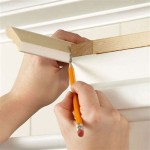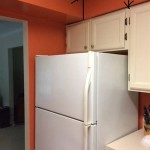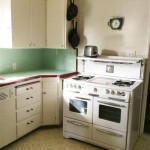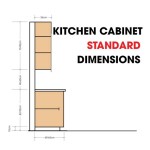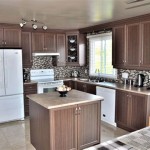Classic Elegance: Exploring the World of Traditional Kitchen Cabinets
The kitchen stands as a central hub in many homes, a space where meals are prepared, conversations are shared, and memories are created. The aesthetics of this vital room significantly influence the overall ambiance of the house. Traditional kitchen cabinets have remained a steadfast choice for homeowners seeking a timeless and sophisticated look. Their enduring appeal lies in their detailed craftsmanship, warm finishes, and ability to evoke a sense of comfort and heritage.
Traditional kitchen cabinets are characterized by several key features that distinguish them from more modern or contemporary styles. These features include raised panel doors, ornate detailing, and a focus on natural materials. The design often incorporates elements reminiscent of historical periods, such as Victorian or early American styles, blending classic design principles with modern functionality.
The Hallmarks of Traditional Cabinet Design
Several distinctive features define traditional kitchen cabinets, contributing to their recognizable and enduring aesthetic. Understanding these elements is crucial for homeowners planning a kitchen renovation or new construction project and desiring a traditional style.
Raised Panel Doors: Raised panel doors are perhaps the most recognizable feature of traditional cabinets. Unlike flat panel doors, raised panels have a center panel that is slightly elevated above the surrounding frame. This adds depth and dimension to the cabinets, creating a more visually interesting and sophisticated look. The raised panel can be a simple, subtle elevation, or a more elaborate, multi-tiered design, depending on the desired level of ornamentation.
Ornate Detailing: Traditional cabinets often feature detailed embellishments such as decorative moldings, carved accents, and intricate hardware. Molding can be applied to the cabinet doors, drawer fronts, and along the top and bottom of the cabinets (crown molding and base molding, respectively). Carved details can include floral motifs, geometric patterns, or other decorative elements that add a touch of elegance and sophistication. Hardware, such as knobs and pulls, often features antique finishes like brass, bronze, or pewter to complement the overall traditional aesthetic.
Warm Finishes and Natural Materials: Traditional cabinets typically showcase warm finishes such as stained wood in rich tones like cherry, maple, or walnut. These natural wood finishes highlight the grain patterns and add warmth and character to the kitchen. Painted cabinets are also common in traditional kitchens, often in creamy whites, soft yellows, or muted greens. The use of natural materials, such as solid wood doors and drawer fronts, further enhances the authenticity and timeless appeal of traditional cabinets.
The combination of these three characteristics—raised panel doors, ornate detailing, and warm finishes/natural materials—defines the cornerstone of traditional kitchen cabinet design. These elements work together to create a space that feels both elegant and inviting.
Material Choices for Traditional Cabinets
The selection of materials plays a significant role in the durability, appearance, and overall cost of traditional kitchen cabinets. Choosing the right materials ensures that the cabinets not only look authentic but also withstand the rigors of daily use in a busy kitchen environment.
Solid Wood: Solid wood is a premium material choice for traditional cabinets, valued for its beauty, durability, and longevity. Popular wood species include cherry, maple, oak, walnut, and birch. Cherry wood is known for its rich, reddish-brown color and smooth grain, while maple is a lighter, more neutral option that can be stained or painted. Oak is a strong, durable wood with a prominent grain pattern, and walnut offers a luxurious, dark-brown hue. Each wood species offers a unique aesthetic, allowing homeowners to customize the look of their cabinets to suit their personal preferences. Solid wood is typically used for cabinet doors, drawer fronts, and face frames, providing a sturdy and attractive foundation for the cabinets.
Wood Veneer: Wood veneer involves applying a thin layer of real wood over a core material such as plywood or particleboard. This option offers the look of solid wood at a more affordable price point. High-quality wood veneer can be difficult to distinguish from solid wood, especially when finished with a stain or paint. Wood veneer cabinets are also less susceptible to warping or cracking than solid wood cabinets, making them a practical choice for kitchens with varying humidity levels. However, wood veneer is not as durable as solid wood and may be more prone to damage from scratches or dents.
Medium-Density Fiberboard (MDF): MDF is an engineered wood product made from wood fibers and resin. It is a stable, smooth material that is ideal for painted cabinets. MDF does not have a grain pattern, making it an excellent choice for achieving a flawless, uniform finish. It's also less prone to expansion and contraction compared to solid wood, making it suitable for areas with high humidity. Although more affordable than solid wood and veneer, MDF is less resistant to moisture damage and may not be as durable as other materials.
The judicious selection of materials is paramount in achieving the desired aesthetic and functionality of traditional kitchen cabinets. The chosen material influences not only the visual appeal but also the cabinets' long-term performance and maintenance requirements.
Incorporating Traditional Cabinets into Modern Kitchens
While traditional cabinets evoke a sense of history and timelessness, they can be seamlessly integrated into modern kitchens, creating a harmonious blend of classic design and contemporary functionality. This integration involves careful planning and consideration of color palettes, hardware choices, and appliance selections to ensure a cohesive and balanced look.
Color Palette Considerations: Traditional kitchens often feature warm, muted color palettes that create a sense of comfort and elegance. Creamy whites, soft yellows, and muted greens are popular choices for painted cabinets, while rich wood stains like cherry, maple, or walnut provide a warm and inviting ambiance. To modernize the look, consider incorporating contrasting colors or accent walls. For example, pairing cream-colored cabinets with a dark-colored island or backsplash can add visual interest and depth to the kitchen. Neutral tones such as grays or beiges can also be used to balance the warmth of traditional cabinets with a more contemporary feel.
Hardware and Fixture Choices: The hardware and fixtures chosen for traditional cabinets can significantly impact the overall aesthetic of the kitchen. Antique brass, bronze, or pewter knobs and pulls complement the traditional style, while more modern hardware options, such as brushed nickel or stainless steel, can add a contemporary touch. Consider the finish of the appliances as well. Stainless steel appliances, while modern, can be integrated seamlessly by selecting cabinet hardware in a similar finish. Lighting fixtures also play a crucial role. Opt for pendant lights with classic designs or chandeliers to enhance the traditional ambiance, or choose recessed lighting for a more subtle and modern approach.
Appliance Integration: Integrating modern appliances into a traditional kitchen requires careful planning. Panel-ready appliances, which can be covered with custom cabinet fronts, allow you to seamlessly blend modern conveniences with the traditional aesthetic. Alternatively, consider selecting appliances with classic designs and finishes, such as a retro-style refrigerator or a copper-accented range hood. Strategically placing appliances and incorporating them into the overall design can help maintain the traditional ambiance while enjoying the benefits of modern technology.
Successfully integrating traditional cabinets into modern kitchens involves a thoughtful balance of classic design elements and contemporary features. By carefully considering color palettes, hardware and fixture choices, and appliance integration, homeowners can create a kitchen that is both timeless and functional.
The enduring appeal of traditional kitchen cabinets lies in their ability to evoke a sense of warmth, elegance, and heritage. By understanding the key features of traditional cabinet design, exploring the various material options, and considering how to integrate them into modern kitchens, homeowners can create a space that is both beautiful and functional, reflecting their personal style and preferences.

How To Design A Traditional Kitchen With White Cabinets

Why Use White Cabinets In A Traditional Kitchen Wood Co

How To Design A Traditional Kitchen With White Cabinets

Traditional Kitchen Cabinets Cabinetselect Com

Traditional Kitchen Cabinets Photos Tips For 2024

20 Traditional Kitchens Kitchen Design Ideas

Statement Hoods Jpg

65 Extraordinary Traditional Style Kitchen Designs

30 Design Ideas For Luxurious Traditional White Kitchen Cabinets
:strip_icc()/101868058-4305e937647946f6b8dae99da998ca13.jpg?strip=all)
Traditional Kitchen Cabinets

